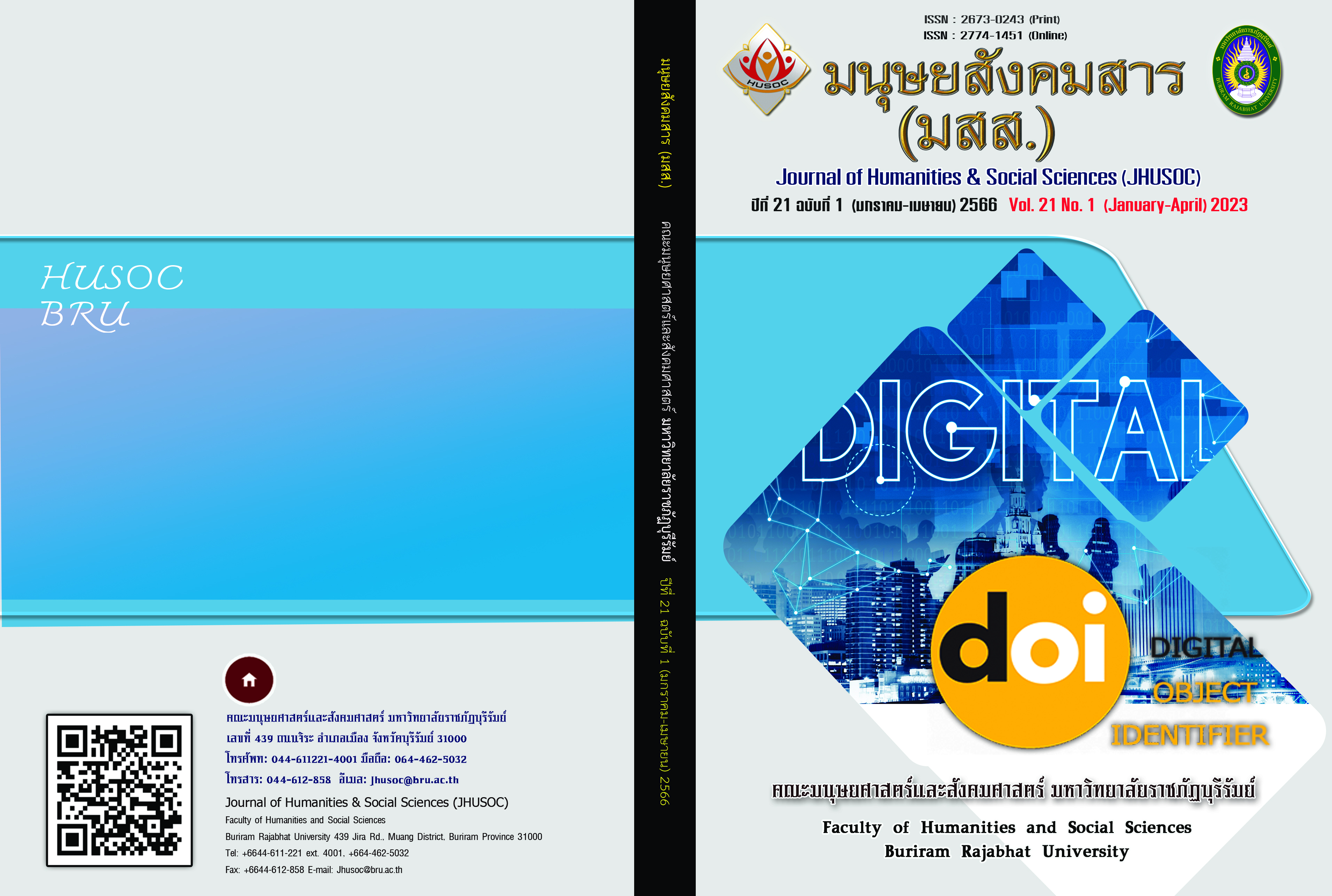The Development of Fabric Dyeing Pot Innovations to Increase Community’s Potential of the Economic Community in Sisaket Province
Main Article Content
Abstract
The objectives of this research are to 1) develop an innovation to enhance the potential of fabric dyeing pots for the economic community in Sisaket province. A method for selecting the target groups used in the specific study consisted of four weaving groups in Sisaket Province, including Nongkhuyai village in Buengbun district, Muangluang village in Huaithapthan district, Nongrung village in Phayu district and Noinacharoen village in Prangku district. There are 30 persons from each target group, for a total of 120 persons. The research tool was a structured interview. Analyze data with content analysis. The researcher would use the information to design and create an innovative fabric dyeing pot. After that, they tested and evaluated the satisfaction with the fabric dyeing pot innovation with a satisfaction assessment form. Data were analyzed using frequency, percentage, mean, and standard deviation. The researcher has developed an innovative fabric dyeing pot with a user manual. The use of the dye pot has three processes: 1) Preparation of dyes 2) Dyeing and 3) Silk thread drying, the researcher has developed a set to steam silk threads before drying them to make silk threads more aligned. The dyeing pot is made of stainless steel so that it does not cause residue and passes the dyeing standards of the Queen Sirikit Department of Sericulture. When using the dye pot to experiment with the target group, The results of the satisfaction assessment revealed that the target group was satisfied with the dye pot innovation at the highest level.
Article Details

This work is licensed under a Creative Commons Attribution-NonCommercial 4.0 International License.
เนื้อหาและข้อมูลในบทความที่ลงตีพิมพ์ในวารสารทดสอบระบบ ThaiJo2 ถือเป็นข้อคิดเห็นและความรับผิดชอบของผู้เขียนบทความโดยตรงซึ่งกองบรรณาธิการวารสาร ไม่จำเป็นต้องเห็นด้วย หรือร่วมรับผิดชอบใดๆ
บทความ ข้อมูล เนื้อหา รูปภาพ ฯลฯ ที่ได้รับการตีพิมพ์ในวารสารทดสอบระบบ ThaiJo2 ถือเป็นลิขสิทธิ์ของวารสารทดสอบระบบ ThaiJo2 หากบุคคลหรือหน่วยงานใดต้องการนำทั้งหมดหรือส่วนหนึ่งส่วนใดไปเผยแพร่ต่อหรือเพื่อกระทำการใดๆ จะต้องได้รับอนุญาตเป็นลายลักอักษรจากวารสารทดสอบระบบ ThaiJo2 ก่อนเท่านั้น
References
Chusangnin, C. (2021, February 10). Technology design. SciMath. https://www.scimath.org/lesson-technology/item/11313-2020-02-18-04-06-04.
Division of Chemicals and Consumer Products (DSS). (2016). Natural dyeing process. Documents for training workshops, courses on product development of woven fabrics with natural dyes in Amnat Charoen province in the project to improve the quality of community products (OTOP), the type of woven fabric to be certified as a standard. Bangkok: Department of Science Service (DSS). [in Thai]
Luepong, K., Santhongkaew, P., & Phatarathanakulchai, P. (2013). Autoclave development for using in natural dyes extraction and dyeing process under project plan textiles knowledge management for research and local wisdom conservation: a case study of Karen woven fabric. Bangkok: Rajamangala University of Technology Phra Nakhon. [in Thai]
Ministry of Industry. (2016). Cleaner technology-CT. https://greenindustry.diw.go.th /webgi/wp-content/uploads/2022/11/ct_industry.pdf.
Ponsri, S. (2004). Principles of sociology (5th ed.). Bangkok: Odeon Store Publishing House. [in Thai]
Pratwet, P., Sriboonruang, S., Manenin, N., & Rojanasang, C. (2018). Silk cloth, cotton fiber: From local wisdom to Sisaket identity.” Sarakham Journal, 37(5), 109-118.
Sanai, K., & Sirithip, K. (2017). The technology transfers of natural dyes of textiles for Tha Moung subdistric, Selaphum distric, Roi Et province. Roi Et: Roi Et Rajabhat University. [in Thai]


